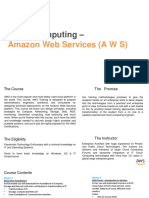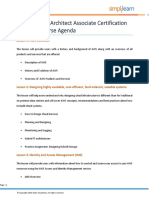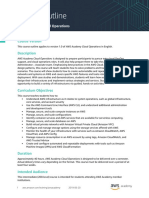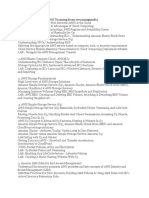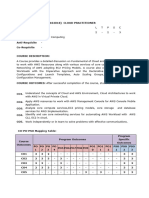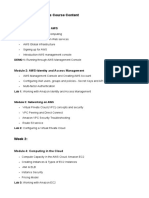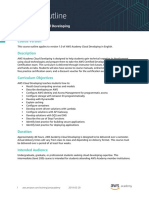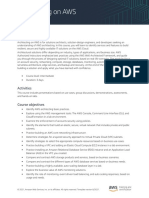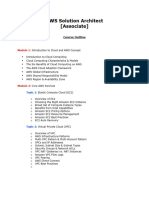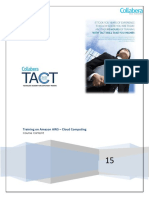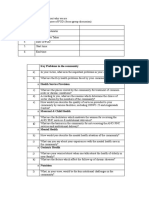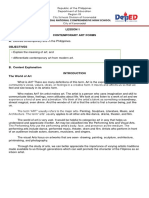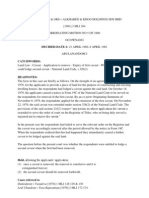0% found this document useful (0 votes)
62 views9 pagesAWS Devops Course Content
The document outlines a 13 module AWS training course covering topics such as AWS overview, designing cloud infrastructure, identity and access management (IAM), virtual private clouds (VPCs), compute with EC2, storage with S3, routing with Route53, databases, application services, security practices, disaster recovery, troubleshooting, and preparing for the AWS Solutions Architect exam. It also includes a separate DevOps course covering continuous integration/delivery, infrastructure as code, monitoring/logging, security/compliance, scaling/availability, and containerization. Both courses include demos and practice assignments for each topic.
Uploaded by
dhwanishahbCopyright
© © All Rights Reserved
We take content rights seriously. If you suspect this is your content, claim it here.
Available Formats
Download as DOCX, PDF, TXT or read online on Scribd
0% found this document useful (0 votes)
62 views9 pagesAWS Devops Course Content
The document outlines a 13 module AWS training course covering topics such as AWS overview, designing cloud infrastructure, identity and access management (IAM), virtual private clouds (VPCs), compute with EC2, storage with S3, routing with Route53, databases, application services, security practices, disaster recovery, troubleshooting, and preparing for the AWS Solutions Architect exam. It also includes a separate DevOps course covering continuous integration/delivery, infrastructure as code, monitoring/logging, security/compliance, scaling/availability, and containerization. Both courses include demos and practice assignments for each topic.
Uploaded by
dhwanishahbCopyright
© © All Rights Reserved
We take content rights seriously. If you suspect this is your content, claim it here.
Available Formats
Download as DOCX, PDF, TXT or read online on Scribd
/ 9














